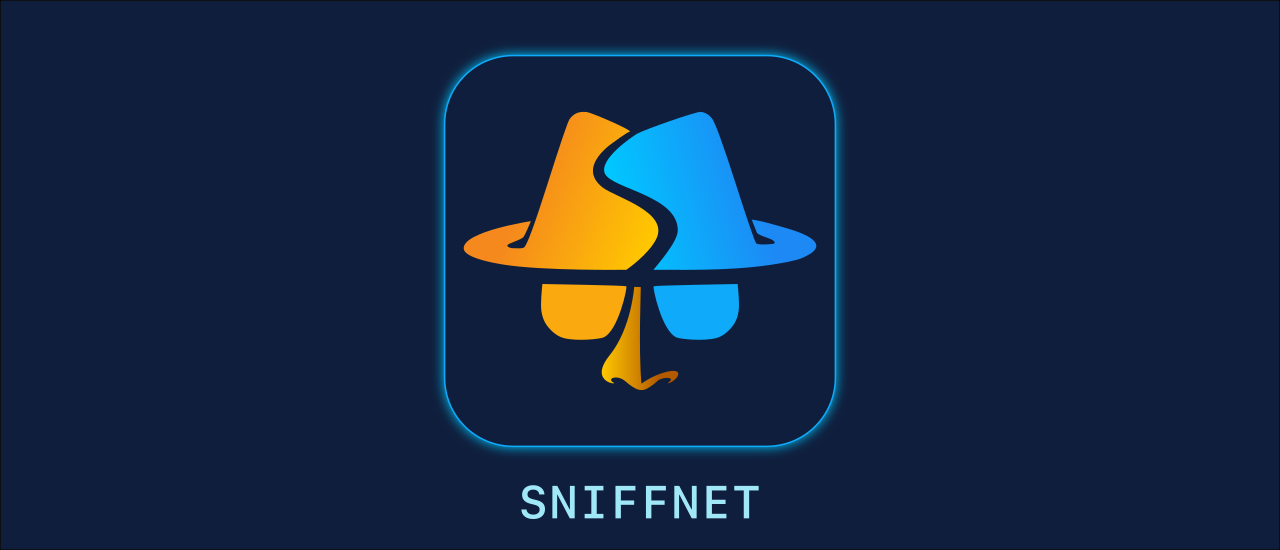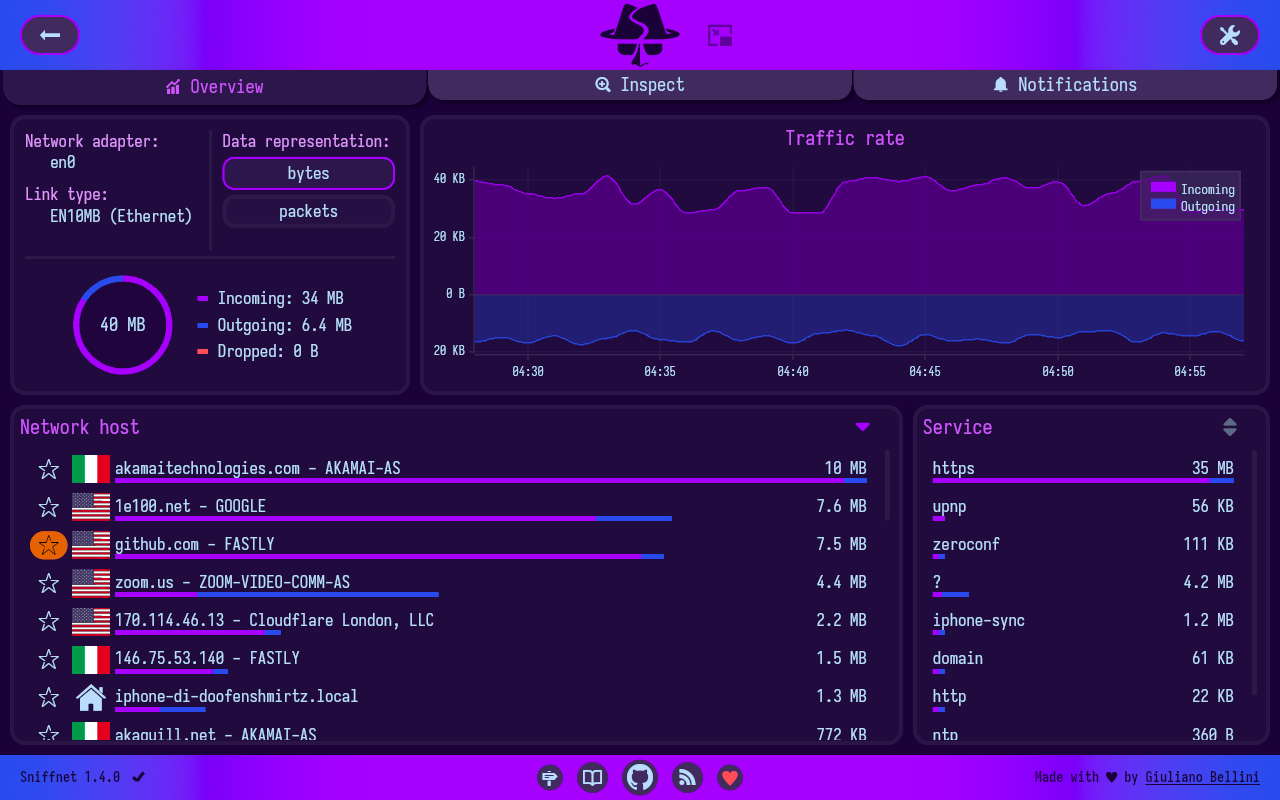
Application to comfortably monitor your Internet traffic.
Cross-platform. Intuitive. Reliable.
Translated in:
🇨🇳 🇩🇪 🇫🇷 🇷🇺 🇵🇹 🇪🇦 🇮🇹 🇵🇱 + 15 more languages


Sniffnet is completely free, open-source software which needs lots of effort and time to develop and maintain.
If you appreciate Sniffnet, consider sponsoring:
your support will enable a constant growth with new features and functionalities.
Do you want to help the project in an alternative way? You can also head to the official store and put your hands on some cool merchandise!
A special mention goes to these awesome organizations and folks who are sponsoring Sniffnet:
|
|
64-bit | 32-bit |
|
|
Intel | Apple silicon |
|
|
AppImage: amd64 | arm64 | i386 | armhf DEB: amd64 | arm64 | i386 | armhf RPM: x86_64 | aarch64 |
Links in the table above will download the latest version of Sniffnet directly from GitHub releases.
Not what you're looking for? Check out alternative installation methods.
Note
Remember to also install the required dependencies for your operating system.
- 💻 choose a network adapter of your PC to inspect
- 🏷️ select a set of filters to apply to the observed traffic
- 📖 view overall statistics about your Internet traffic
- 📈 view real-time charts about traffic intensity
- 📌 keep an eye on your network even when the application is minimized
- 📁 import and export comprehensive capture reports as PCAP files
- 🔎 identify 6000+ upper layer services, protocols, trojans, and worms
- 🌐 find out domain name and ASN of the hosts you are exchanging traffic with
- 🏠 identify connections in your local network
- 🌍 discover the geographical location of remote hosts
- ⭐ save your favorite network hosts
- 🕵️♂️ search and inspect each of your network connections in real time
- 🔉 set custom notifications to inform you when defined network events occur
- 🎨 choose the style that fits you the most, including custom themes support
- ...and more!
Do you want to learn more?
Check out the Sniffnet Wiki, a comprehensive manual to help you
thoroughly master the application from a basic setup to the most advanced functionalities.
The Wiki includes step-by-step guides, tips, examples of usage, and answers to frequent questions.
See details
Most of the errors that may arise are likely due to your system missing dependencies
required to correctly analyze a network adapter.
Check the required dependencies page
for instructions on how to proceed depending on your operating system.
In some circumstances, especially if you are running on an old architecture or your graphical drivers are not updated,
the wgpu default renderer used by iced
may manifest bugs (the interface glitches, color gradients are unsupported, or some icons are completely black).
In these cases you can set an environment variable to switch to the tiny-skia renderer,
a CPU-only software renderer that should work properly on every environment:
ICED_BACKEND=tiny-skiaIn any case, don't hesitate to open an issue, and I will do my best to help you!
- A big shout-out to all the contributors of Sniffnet!
- The graphical user interface has been realized with iced, a cross-platform GUI library for Rust focused on simplicity and type-safety
- IP geolocation and ASN data are provided by MaxMind
- Free code signing for Windows Installer is provided by SignPath.io, certificate by SignPath Foundation
- Sniffnet project is supported by ADS.FUND
- Last but not least, thanks to every single stargazer: all forms of support made it possible to keep improving Sniffnet!
Wait... there's more!
Sniffnet is rapidly evolving, and new features are added on a regular basis.
Follow the news and Sniffnet socials to never miss an update.




